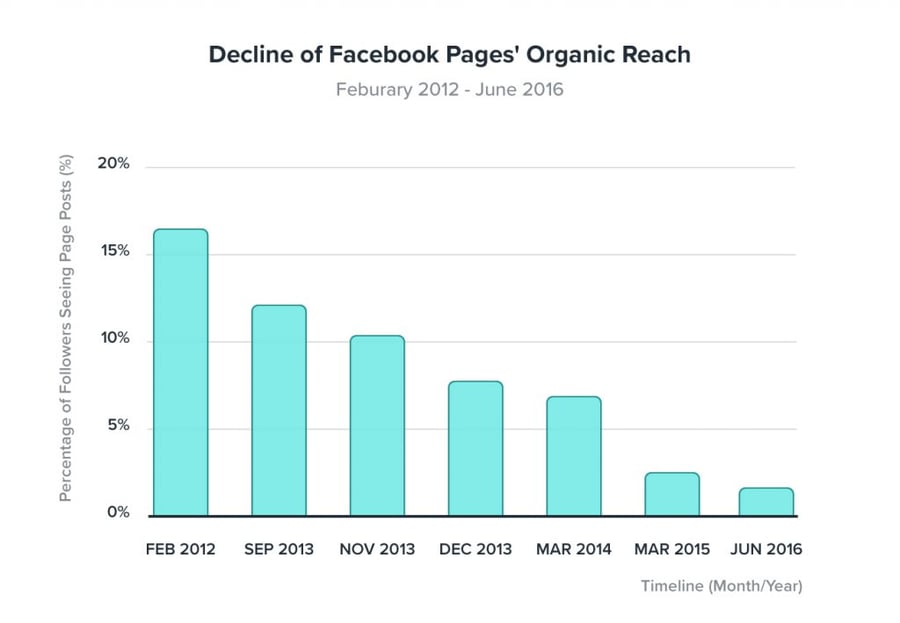
How to Sell Content on a Cost Per Read Model
Why would you sell content the same way you sell a banner ad?
Custom branded content is frequently the most expensive line item in a digital media campaign, and accordingly, advertisers expect a lot from their content. Simply getting a one-second impression on an article is not enough to generate a meaningful connection with the reader. Savvy advertisers know this all too well, and are increasingly discontent with content campaigns that don’t deliver the engagement they expect.
For this reason, content requires a new pricing strategy — one that more accurately reflects the goals of the medium by placing a greater value on engagement.
Our solution is the Cost Per Read (CPR) model. Under the CPR model, branded content is bundled with a guaranteed number of high-quality reads, so the advertiser knows exactly how many people will actively engage with their content. This immediately makes branded content less risky for the advertiser — who may be apprehensive about spending upwards of $10,000 on one piece of content — and removes ambiguity around the campaign deliverables. This makes it easier to sell branded content campaigns and establish yourself as a trusted media partner.
For publishers, this also means that better content becomes more valuable. If your content is popular, it’s easier to drive traffic to it, letting you increase the total amount of reads you promise on a story. As long as you’re able to deliver more and more reads, your potential revenue is infinite. And because publishers can charge up to a 66% margin on amplification, it’s an overall low-risk initiative.
Long gone are the days of bundling a piece of content with a few thousand native ad impressions and providing no guarantees that it would be viewed by even a single reader. More advertisers are demanding guaranteed performance, and the Cost Per Read model is the easiest way to deliver.
Not only will the CPR model allow your teams more time to do the work they do best — tell stories — but it will significantly boost your potential revenue for sponsored content campaigns. Here’s how:
Using CPR to Become More Profitable

From a profitability standpoint, Cost Per Read creates an opportunity to generate more revenue from your content by adding more reads to the campaign at the pre-set cost. Every time the publisher drives a unique reader to a brand’s content, they’re rewarded with incremental revenue. Better yet, the publisher controls how the reader arrives at the article — be it organically, through native traffic drivers on your website, or via paid ads on your social handles.
This sort of pricing flexibility simply isn’t possible when charging a flat fee for branded content, which also has the unfortunate side effect of limiting your revenue to that one-time sale. Publishers understand this limitation and will often try to make a campaign more profitable by including add-ons like banners, social posts and e-newsletter mentions — things they often get pushback on from agencies, who want to see as many of their dollars go to content as possible. Instead, give clients what they actually want: views on a piece of content.
Advertisers are eager to invest in amplification to ensure their stories reach as many people as possible — even when it’s sold at a premium. Why is this?
First, organic traffic has fallen significantly since 2014, making paid amplification a crucial method to drive views to content.
Second, advertisers value your brand and audience, meaning they’ll pay extra to have their content promoted on your site and social handles. With these insights, you can turn a $3,500 sponsored post into a $10,000 one simply by getting more people to see it.
Third, advertisers might want to reach a niche section of your audience, or even a group beyond your organic reach. Paid promotion makes this possible and can even help you expand your readership.
We’ve already seen agencies like Omnicom, GroupM and IPG begin to demand guaranteed performance from their vendors, and the trend is only growing. By implementing a pricing model that places greater value on content, you won’t miss out the next time they send out an RFP.
Expand Your Social Audiences at Zero Cost to You
According to Keywee, the cost of clicks to content on Facebook has increased 103% year over year. This not only makes it difficult to give clients social amplification on your campaigns – it makes it challenging to earn new readers in general.
The added bonus of the CPR model is that someone else pays for your amplification. Social ads, paid for by the advertiser, drive traffic to your stories. This model gets you guaranteed amplification plus whatever markup you’ve added, while also letting you connect with new potential readers. Rather than only sharing your content with users who already follow your social accounts, your content is promoted to a broader audience that aligns with your client’s campaign goals. So in addition to making a mark-up on amplification, you’re connecting your brand with new readers who may become loyal followers.
A better business model for sponsored content is long overdue. The good news is that the CPR model is not only easy to implement, but it makes your products more profitable and more desirable to clients.
To continue reading the full “How to Sell Content on a Cost Per Read Model” whitepaper, click on the download link here.
Get your Content Marketing Fix
Sign up to receive tips on storytelling and much more.
We promise to respect your inbox.


